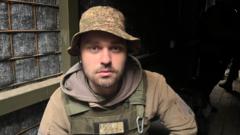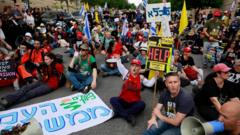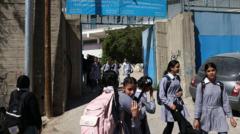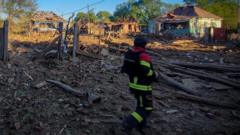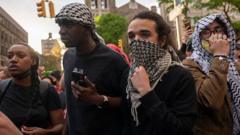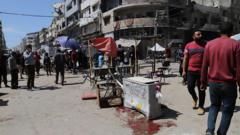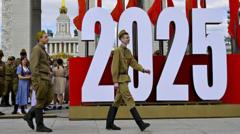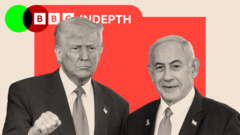On January 25, 2025, Hamas once again demonstrated its influence in the Gaza Strip with a highly publicized handover of Israeli hostages to the Red Cross, marking the second such event in a week.
Hamas Displays Strength in Hostage Handover Amid Ongoing Conflict

Hamas Displays Strength in Hostage Handover Amid Ongoing Conflict
Hamas orchestrates a dramatic hostage release, reinforcing its presence in Gaza despite prolonged warfare.
In a strategic display meant to project power, Hamas hosted a ceremonial stage in the devastated Palestine Square of Gaza City, where the group presented four Israeli soldiers taken hostage during the October 2023 attacks. This handover followed a previous release of female captives, but was marked by a more extravagant setup featuring a stark message of resilience against Zionism displayed prominently.
The four soldiers, appearing in military fatigues, were received in an atmosphere of celebration among hundreds of Hamas fighters and civilians, including masked militants and onlookers who cheered and filmed the transfer. Reporters noted that Israeli officials have voiced concerns over the potential coercion of hostages, specifically regarding the forced smiling as a part of what they claim is a propaganda initiative by Hamas.
Despite millions spent on Israel's military campaigns and the ongoing toll of the conflict—thousands of soldiers and civilians lost—Hamas's public displays aim to reaffirm its grip as the dominant political and armed force in Gaza. The group continues to showcase its survival amidst extensive destruction, using the handover ceremonies as a testament to its operational capability.
The role of the Red Cross, which facilitated the handover of these soldiers, further emphasized the complex dynamics of the conflict and the ongoing human rights concerns surrounding hostage situations. While Hamas seeks to maintain an image of control, voices of former hostages recounting their harrowing experiences depict a starkly different reality of abuse and mistreatment under captivity.
With the recent cease-fire, the resilience shown by Hamas through these events highlights a broader struggle for power and narratives in the ongoing conflict, setting the stage for continued tensions and negotiations in the region.
As the situation evolves, the implications of these public displays and the narratives being crafted around them could influence both local perceptions and the international community's response to the protracted conflict between Israelis and Palestinians.
The four soldiers, appearing in military fatigues, were received in an atmosphere of celebration among hundreds of Hamas fighters and civilians, including masked militants and onlookers who cheered and filmed the transfer. Reporters noted that Israeli officials have voiced concerns over the potential coercion of hostages, specifically regarding the forced smiling as a part of what they claim is a propaganda initiative by Hamas.
Despite millions spent on Israel's military campaigns and the ongoing toll of the conflict—thousands of soldiers and civilians lost—Hamas's public displays aim to reaffirm its grip as the dominant political and armed force in Gaza. The group continues to showcase its survival amidst extensive destruction, using the handover ceremonies as a testament to its operational capability.
The role of the Red Cross, which facilitated the handover of these soldiers, further emphasized the complex dynamics of the conflict and the ongoing human rights concerns surrounding hostage situations. While Hamas seeks to maintain an image of control, voices of former hostages recounting their harrowing experiences depict a starkly different reality of abuse and mistreatment under captivity.
With the recent cease-fire, the resilience shown by Hamas through these events highlights a broader struggle for power and narratives in the ongoing conflict, setting the stage for continued tensions and negotiations in the region.
As the situation evolves, the implications of these public displays and the narratives being crafted around them could influence both local perceptions and the international community's response to the protracted conflict between Israelis and Palestinians.

